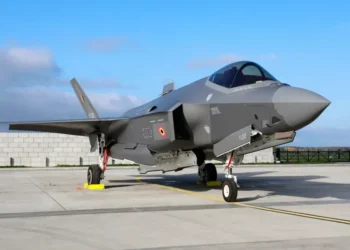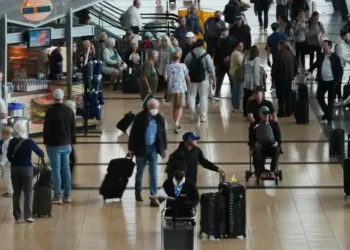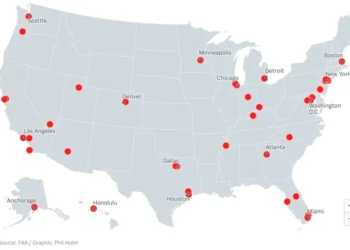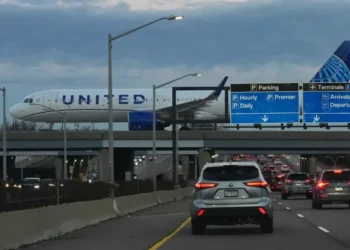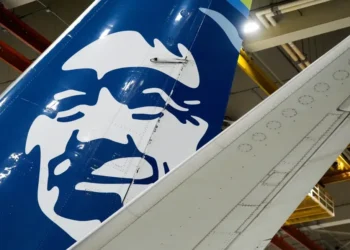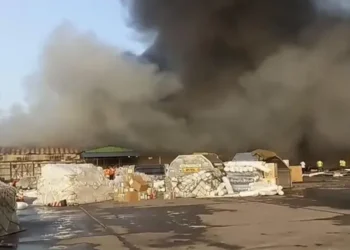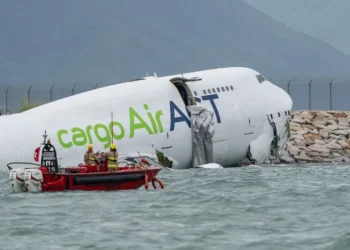Broken Altimeter, Missed Warnings Cited in Deadly D.C. Helicopter and Jet Collision
Published: August 3, 2025, 14:00 EDT
A recent series of investigative hearings by the National Transportation Safety Board (NTSB) revealed alarming systemic failures by both the Federal Aviation Administration (FAA) and the U.S. Army following a January midair collision over Washington, D.C. The tragic incident, which involved a Black Hawk helicopter and a commercial airliner, resulted in the deaths of 67 people. Testimony exposed critical safety lapses, including faulty instruments, minimal aircraft separation, and ignored prior warnings.
Broken Altimeter Played Key Role in Midair Collision
One of the central findings in the NTSB hearings was the discovery that the altimeter on the Black Hawk helicopter involved in the crash was significantly off. The aircraft was flying at 278 feet—well above the 200-foot ceiling authorized for that route. However, the helicopter’s barometric altimeter was reading 80 to 100 feet lower than the actual altitude, creating a false sense of compliance for the pilots.
Investigators further found similar discrepancies in three other helicopters from the same Army unit, suggesting a broader equipment reliability issue.
A representative from Sikorsky, the helicopter manufacturer, noted the aircraft was an older model that lacked newer air data computers, which allow for more precise readings.
While some Army pilots downplayed the discrepancy, stating that radar altimeters and flight discipline can compensate for these errors, civilian aviation experts disagreed. Rick Dressler, of medevac operator Metro Aviation, testified that such discrepancies would be unacceptable under their safety protocols, emphasizing that altitude ceilings must be treated as hard limits.
FAA, Army Officials Deflect Responsibility Amid Public Scrutiny
Testimony throughout the hearings revealed a pattern of finger-pointing between FAA and Army officials, each deflecting blame for the deadly crash. However, both agencies faced criticism for policies and practices that likely contributed to the incident.
Aviation safety consultant and former crash investigator Jeff Guzzetti summarized the proceedings as “a week of reckoning” for both organizations.
Among the key concerns raised was the FAA’s decision to approve overlapping helicopter and jet flight paths around Ronald Reagan Washington National Airport. One such route allowed aircraft to be separated by as little as 75 feet—well below the safety threshold commonly observed in high-traffic airspace.
Scott Rosengren, chief engineer overseeing Army utility helicopters, called the sub-500-foot separations “a concern,” while Army Chief Warrant Officer David Van Vechten expressed surprise that a controller authorized the Black Hawk to continue its route while a passenger jet was preparing to land on Reagan’s secondary runway.
Air Traffic Control Under Fire for Lax Visual Separation Practices
The air traffic control team at Reagan National was also a focus of the hearings. The NTSB criticized the FAA’s reliance on visual separation during nighttime operations involving multiple aircraft. Controllers testified that they often used “squeeze plays” to maintain traffic flow, relying heavily on pilot eyesight rather than radar coordination.
On the night of the crash, controllers asked the helicopter crew twice if they could visually identify the jet. The pilots confirmed and requested visual separation clearance. However, testimony questioned whether they were truly able to see the plane while wearing night vision goggles—raising doubts about the validity of that clearance.
The controller involved admitted that the commercial jet’s pilots were never warned about the helicopter’s position, despite its proximity. The jet crew did attempt to pull up after receiving a cockpit alert, but it was too late to avoid the collision.
FAA Previously Warned About Rising Helicopter Risks
One of the most damning revelations was that the FAA had received multiple internal warnings about increasing risks from helicopter operations in the D.C. area.
In 2022, an FAA working group recommended adding cautionary language to helicopter charts when Reagan’s secondary runway was in use. The recommendation was ultimately rejected. A radar facility manager also raised concerns about overcrowding in the airspace, urging the FAA to reduce traffic volume—a suggestion that went unheeded.
The NTSB also revealed that 85 near misses had occurred around Reagan in the three years prior to the crash, a statistic the FAA failed to act upon.
Leadership Response Criticized During Hearings
NTSB Chairwoman Jennifer Homendy directly confronted FAA leadership during the hearings, citing their bureaucratic inaction despite repeated safety alerts from within the agency.
“Are you kidding me? Sixty-seven people are dead! How do you explain that—our bureaucratic process?” she asked. “Fix it. Do better.”
Homendy further criticized the FAA for transferring managers after the crash instead of acknowledging internal failures. “What you did is you transferred people out instead of taking ownership over the fact that everybody in FAA in the tower was saying there was a problem,” she added.
Victims Included Promising Athletes, Union Workers
The crash claimed the lives of 67 people, including a group of elite youth figure skaters, their coaches and parents, and four union steamfitters from the Washington metro area. The loss reverberated throughout the community, adding urgency to the NTSB’s investigation.
Final Report Due in 2026
The NTSB’s final crash report is expected in early 2026. While officials do not anticipate a single definitive cause, the hearings have already underscored a dangerous convergence of mechanical failure, regulatory complacency, and airspace mismanagement.
As public confidence in air travel continues to be tested by a series of recent accidents and near misses, the D.C. crash may become a turning point in aviation oversight reforms.
This article was rewritten by JournosNews.com based on verified reporting from trusted sources. The content has been independently reviewed, fact-checked, and edited for accuracy, neutrality, tone, and global readability in accordance with Google News and AdSense standards.
All opinions, quotes, or statements from contributors, experts, or sourced organizations do not necessarily reflect the views of JournosNews.com. JournosNews.com maintains full editorial independence from any external funders, sponsors, or organizations.
Stay informed with JournosNews.com — your trusted source for verified global reporting and in-depth analysis. Follow us on Google News, BlueSky, and X for real-time updates.


